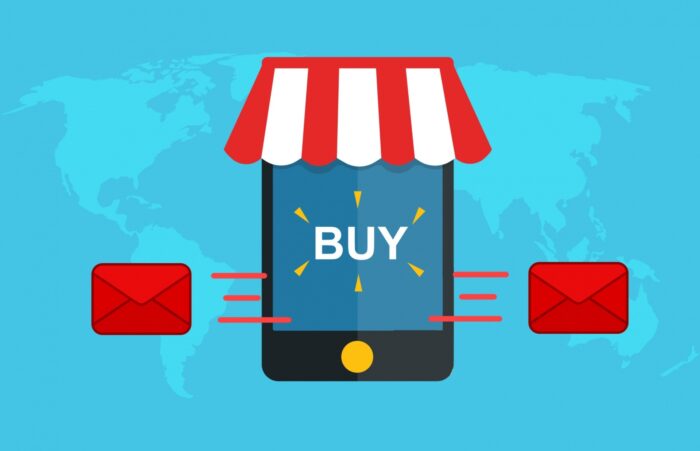 Email marketing has been around for quite some time now, but it still remains one of the most effective ways to connect with your audience and drive conversions. Whether you’re a small business owner or a marketing professional, email marketing should be an integral part of your overall marketing strategy. In this guide, we’ll explore everything you need to know about email marketing, from the basics to advanced strategies for success.
Email marketing has been around for quite some time now, but it still remains one of the most effective ways to connect with your audience and drive conversions. Whether you’re a small business owner or a marketing professional, email marketing should be an integral part of your overall marketing strategy. In this guide, we’ll explore everything you need to know about email marketing, from the basics to advanced strategies for success.
Email marketing involves sending commercial messages to a group of people via email. This can include anything from newsletters and promotional offers to product updates and exclusive content. By utilizing email marketing, businesses can build relationships with their customers and drive revenue.
Why Email Marketing is Important
Email marketing is important for several reasons. Firstly, it’s a cost-effective way to reach a large number of people at once. Additionally, email marketing allows businesses to target specific groups of people based on factors such as location, interests, and purchase history. Finally, email marketing is a great way to build relationships with customers and keep them engaged with your brand.
Getting Started with Email Marketing
To get started with email marketing, you’ll need to choose an email service provider (ESP) such as Mailchimp, Constant Contact, or Aweber. These platforms will allow you to create and send emails to your subscribers, as well as manage your email list and track your email marketing success.
Building Your Email List
The first step to successful email marketing is building a quality email list. This can be done by offering incentives such as exclusive content or discounts in exchange for email signups. It’s also important to make sure your email sign-up form is prominently displayed on your website and social media channels.
Creating Effective Email Campaigns
When creating email campaigns, it’s important to consider your audience and tailor your message accordingly. This can include segmenting your email list based on factors such as location or purchase history, as well as personalizing your emails with the recipient’s name and other relevant details.
Tips for Writing Engaging Emails
To keep your subscribers engaged and interested, it’s important to write engaging email content. This can include using attention-grabbing subject lines, keeping your message short and to the point, and using a conversational tone.
Designing Emails that Convert
The design of your emails can also have a big impact on your email marketing success. This can include using eye-catching graphics and images, creating a clear call-to-action, and ensuring your emails are mobile-friendly.
Email Marketing Automation
Email marketing automation involves setting up a series of emails that are triggered based on specific actions taken by your subscribers. This can include welcome emails, abandoned cart emails, and re-engagement campaigns.
Measuring Email Marketing Success
To ensure the success of your email marketing campaigns, it’s important to track and analyze your email marketing metrics. This can include open rates, click-through rates, and conversion rates.
Advanced Email Marketing Strategies
Advanced email marketing strategies can include things like lead scoring, where you assign a score to each lead based on their behavior and engagement with your emails. Additionally, you can use email retargeting to target people who have previously interacted with your brand but have not yet made a purchase.
Common Email Marketing Mistakes to Avoid
Common Email Marketing Mistakes to Avoid
While email marketing can be incredibly effective, there are also several common mistakes that businesses should avoid. These include sending too many emails, not segmenting your email list, and not personalizing your emails.
Additionally, it’s important to avoid using spam trigger words such as “free” or “act now” in your subject lines, as these can cause your emails to end up in spam folders.
Conclusion
Email marketing is a powerful tool for businesses of all sizes, allowing you to build relationships with your customers and drive revenue. By following the tips and strategies outlined in this guide, you can create effective email campaigns that engage your audience and drive results.
FAQs
- How often should I send emails to my subscribers?
- It depends on your audience and the nature of your business. However, it’s generally recommended to send no more than 1-2 emails per week.
- How can I improve my email open rates?
- There are several things you can do to improve your email open rates, including writing attention-grabbing subject lines, segmenting your email list, and personalizing your emails.
- What is email marketing automation?
- Email marketing automation involves setting up a series of automated emails that are triggered based on specific actions taken by your subscribers.
- Can I use email marketing for B2B marketing?
- Absolutely! Email marketing can be an effective way to reach business customers and build relationships with them.
- How can I measure the success of my email marketing campaigns?
- To measure the success of your email marketing campaigns, you should track metrics such as open rates, click-through rates, and conversion rates.


